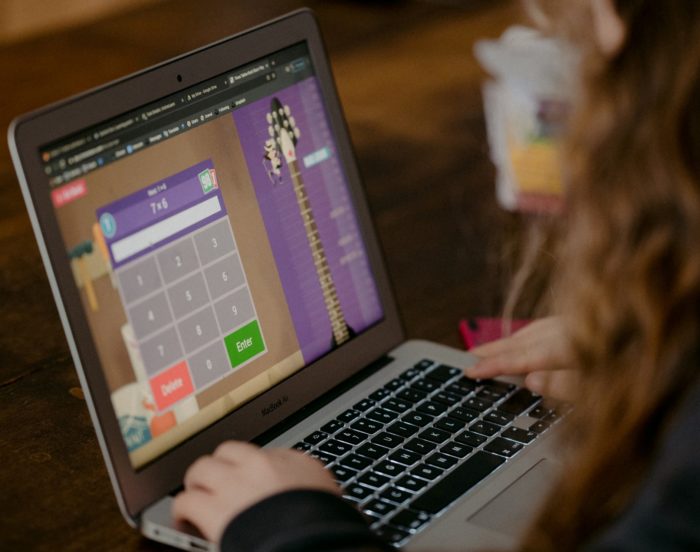100 school leaders identify the biggest challenges this year
District leaders in consensus on the top four ideas that will be necessary to successfully educate students amid the current climate of chaos and disruption
As the 2020-21 school year begins in earnest amid an alarming increase in coronavirus cases, K-12 educators nationwide are facing the greatest challenge of their careers: teaching students in a climate of chaos and disruption while simultaneously dealing with fallout from a truly unprecedented spring term.
Their concerns have been widely documented in the last six months: How can we make our schools safe for students and staff? What can we do to make up for extended learning losses? Who is at the greatest risk of falling further behind? And how do we stop it from happening?
My colleagues spent the last few months talking with more than 100 district leaders about their hopes and concerns. Yes, they shared those common concerns and many others. But our team also discovered that for many, the distance-learning experience from the spring was as instructive as it was trying.
Administrators said they’ve found many reasons to be optimistic about the coming school year, including increased independence in self-led learning by students; a greater interest among school districts in how data can support students; and a new focus on personalized instruction.
We also asked them to consider the tools they need right now to support successful learning. Again, their answers demonstrated remarkable commonalities, with four ideas rising to the top:
- Educators need a multi-grade understanding of student needs
Teachers are supporting more students who are further behind than in years past even as they address a dizzying variety of student needs. Nearly every child, even those previously working at grade level, will be missing some skills.
That’s why there’s widespread consensus among educators that teachers need student diagnostic data to inform their current instruction strategies. To be actionable, however, this multi-grade map should provide many more details than the assessment data we’ve used in the past.
Let’s say a fifth-grader returns to school reading at the third-grade level. Knowing that he hasn’t mastered fifth-grade standards is important, but it provides limited instructional insight. Knowing where students fall with a population — “He’s in the 48th percentile,” or “She has moved from the 64th percentile to the 67th,”— won’t be enough to address gaps.
In the year ahead, the data teachers receive will need to dive deeper into domain- and skill-level diagnosis, painting a clear picture of what students can do and what steps are needed for their success.
- Educators need goals for students that are attainable but ambitious
As students return to school further behind than in the past, educators need a different approach to goal-setting — something more sophisticated than whether students are tracking with their peers.
When we track students to normative goals based on historic averages (such as “average” or “50th percentile growth”), those students tend to hover around the average indefinitely. And when they experience a significant disruption in their learning and continue to grow at average rates, they “stick” at performance even further below grade level.
If our past goal-setting approaches won’t work, what will? Ideally, every learner will have growth goals that put them on a path to grade level, even if that destination isn’t reachable within one academic year. Goals need to be attainable, but also have to be ambitious if we are going to help them ultimately reach grade level.
- Educators need plans for balancing prerequisite and grade-level learning
If the experiences of Louisiana educators after Hurricane Katrina are any indication, teachers returning this fall will face a painful contradiction: Most students will be missing the critical prerequisite skills they’ll need to be successful this year. But all students need grade-level skills to be successful in the long run.
It’ll be impossible to completely dispose of both needs, since there won’t be enough time to make up for lost learning from the spring and cover every grade-level skill. A two-step approach — tackling the prerequisites, then moving on to grade level — simply won’t be possible.
Our teachers need one strategy for melding prerequisite skills and grade-level learning that helps them hone in on the select prerequisite skills necessary to access grade-level learning. Covering everything will be untenable. Focusing on the most critical prerequisite skills is key to engage every learner with grade-level work.
- Educators need instructional programs that hit high marks for quality and ease of use
Despite the heroic efforts of educators, families, local communities, and education technology partners, students lost some instructional opportunities in the spring. And they’ll likely lose more this year, since some schools will have less than 180 days of instruction at their disposal.
Almost every district we spoke with is planning for a combination of remote learning, non-traditional classrooms, or alternative schedules. With greater deficits and less time to intervene, it’s critical for our students’ success that we make the most of every instructional minute.
The quality of instruction clearly matters in addressing this challenge. Beyond a high bar for quality, instructional resources need to be:
- Adaptable to delivery for both in-class and remote learning (likely in print and digital forms).
- Flexible enough to adjust course if school schedules change throughout the year.
- Tied to data, reflecting the needs of individual students.
Given the constraints on teachers’ time, leaders won’t have the option of compromising on quality of instruction or ease of use. Both are necessary for the daunting tasks teachers are facing.
The good news is that while the scale and the circumstances have changed because of the pandemic, these needs aren’t entirely new. Educators serving large populations of at-risk students and meeting the needs of migrant students experience similar challenges every fall.
Shining a light on these needs can help educators focus on creating supportive classrooms virtual and real, and leveraging best practices and tools that help all students succeed.
Source: https://districtadministration.com/100-school-leaders-identify-the-biggest-challenges-this-year/




